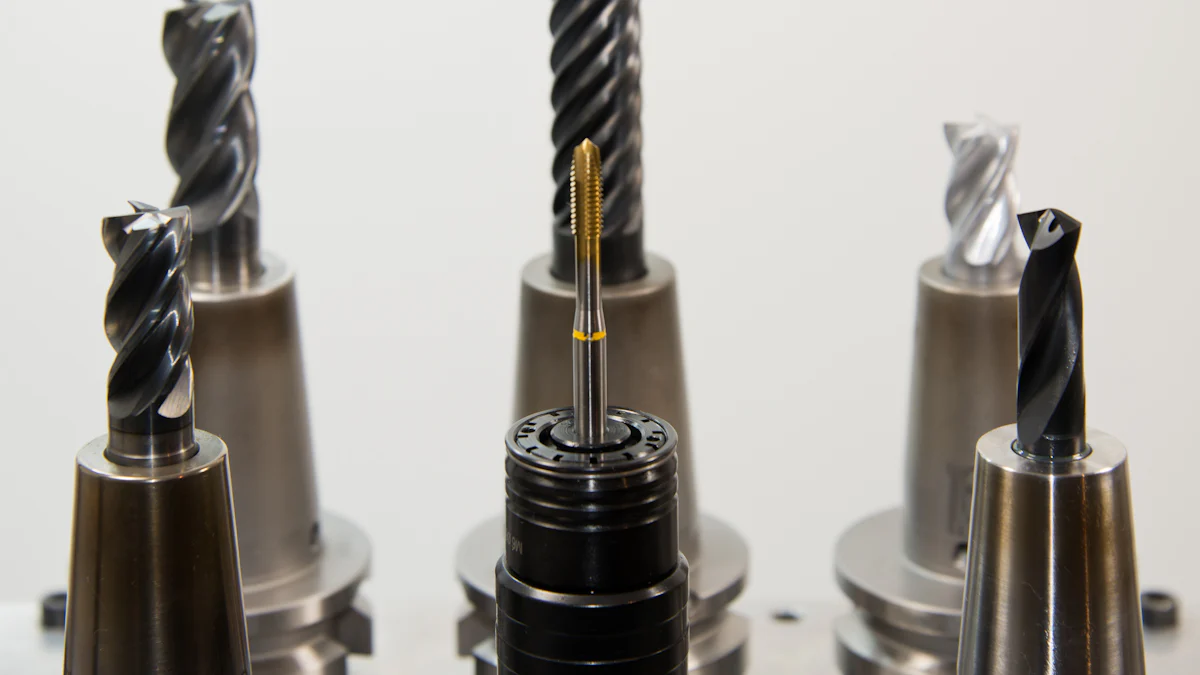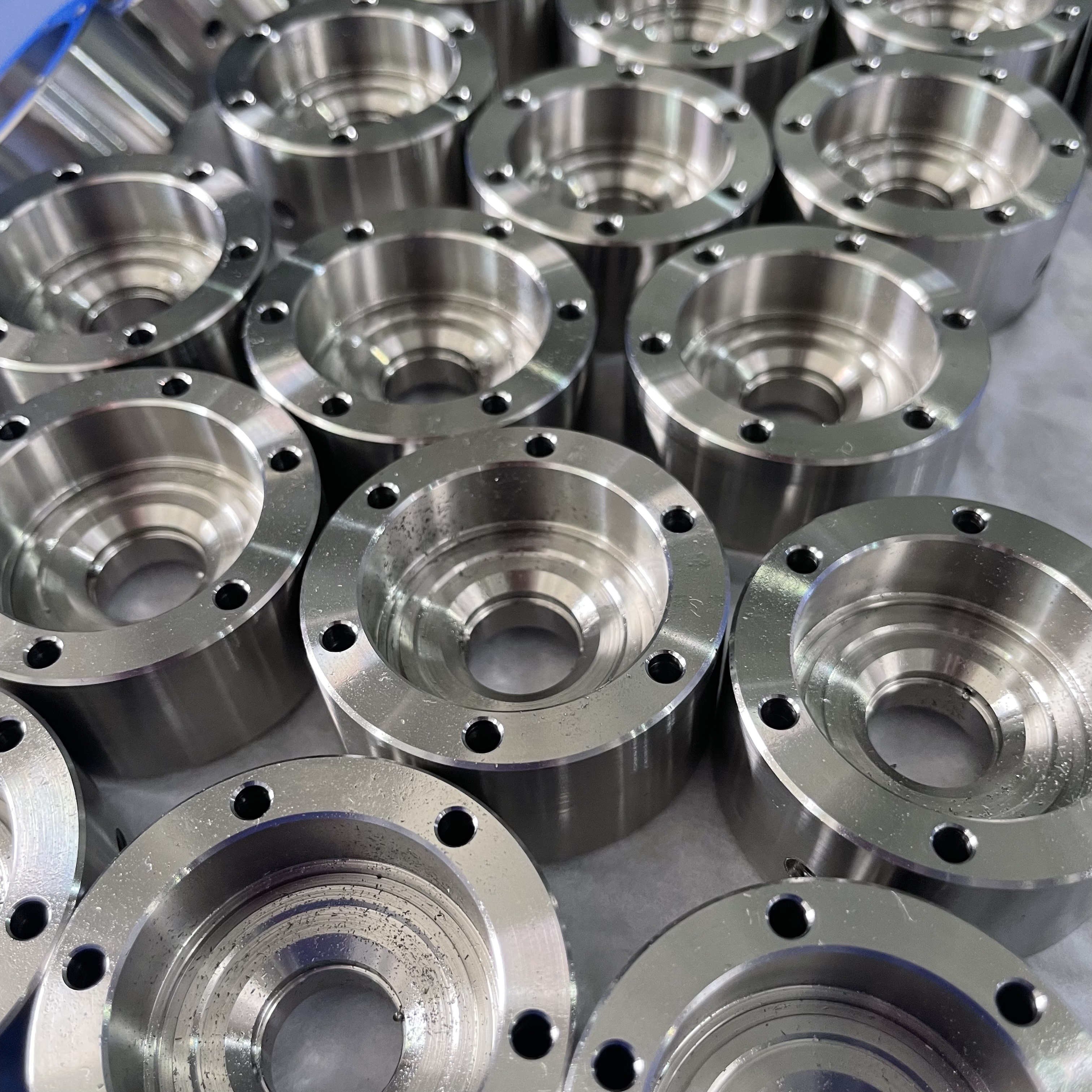Troubleshooting Common Problems in Thread Milling on CNC Machining Centers

Getting Started with Thread Milling on CNC Machining Centers
Thread milling is a versatile machining process used to create threads in a workpiece. Unlike tapping, which requires different tools for each thread size, thread milling uses a single tool to produce multiple thread sizes, making it a cost-effective and efficient method.
Understanding the Basics of Thread Milling
What is Thread Milling?
Thread milling involves the use of a cutting tool to produce internal or external threads. The tool moves in a circular motion around the axis of the workpiece, gradually cutting away material to form the threads. This process can be performed on various materials, including metals, plastics, and composites.
Why Choose CNC Machining Centers for Thread Milling?
CNC machining centers offer precise control over the thread milling process. These advanced machines allow for programmable tool movements and can execute complex thread patterns with high accuracy. Additionally, CNC machining centers provide the flexibility to adjust parameters such as cutting speed, feed rate, and depth of cut, enabling tailored thread milling operations.
Preparing Your CNC Machine for Optimal Performance
Regular Maintenance Checks
To ensure smooth and efficient thread milling operations, it's crucial to conduct regular maintenance checks on your CNC machining center. This includes inspecting and lubricating components such as ball screws, guides, and spindle bearings. Regular maintenance helps prevent unexpected downtime due to machine malfunctions.
Setting the Right Parameters
Optimizing cutting parameters is essential for achieving high-quality threaded components. Setting the correct spindle speed, feed rate, and depth of cut based on the material properties and desired thread specifications is vital for successful thread milling operations.
Utilizing these best practices will help you lay a strong foundation for successful thread milling operations on your CNC machining center.
Identifying and Solving Common Problems in Thread Milling
Thread milling, while a highly efficient machining process, can present various challenges that affect the quality and precision of threaded components. Understanding and addressing these common problems is essential for optimizing thread milling operations on CNC machining centers.
Dealing with Built-up Edge on the Tool Tip
Causes and Consequences
The formation of a built-up edge on the tool tip during thread milling can occur due to inadequate rigidity of the tool handle and vibration during cutting. This buildup negatively impacts the tool's cutting ability, leading to poor thread quality, increased friction, and elevated cutting temperatures. Additionally, it can result in premature tool wear and reduced tool life.
Practical Solutions
To address built-up edge issues, consider using specialized coatings on the cutting tool to enhance its resistance to adhesion and friction. Implementing proper cooling methods, such as through-tool coolant delivery or air blast systems, can help dissipate heat and prevent chip adhesion. Furthermore, optimizing cutting parameters like speed and feed rate can reduce built-up edge formation while ensuring consistent thread quality.
Overcoming Challenges with High-Speed Cutting Threads
Identifying the Issue
High-speed cutting threads with too small cutting thickness or chips being discharged in an inclined direction can lead to issues in thread milling. These challenges often manifest as poor chip evacuation, increased heat generation, and diminished surface finish.
Adjusting Cutting Thickness and Chip Direction
To mitigate these challenges, it's crucial to adjust the cutting thickness based on the material properties and thread specifications. Additionally, optimizing chip direction by adjusting cutter geometry or employing specialized chip breakers can enhance chip evacuation efficiency, reducing heat buildup and improving overall thread quality.
Adjusting Feed Rate to Prevent Problems
The Impact of Excessive Feed Rate
Excessive feed rates during thread milling can result in suboptimal chip formation, increased cutting forces, elevated temperatures, and accelerated tool wear. These issues compromise thread accuracy and surface finish quality.
How to Determine the Optimal Feed Per Tooth
Determining the optimal feed per tooth involves considering factors such as material type, cutter geometry, and machine capabilities. By conducting test cuts at varying feed rates while monitoring chip formation and surface finish quality, operators can identify the ideal feed per tooth for achieving precise threads without compromising tool longevity.
Addressing Tool Vibration and Surface Roughness Issues
Recognizing the Signs
When encountering issues related to tool vibration and surface roughness during thread milling, it's essential to recognize the signs that indicate potential problems. Signs of tool vibration may include irregular cutting sounds, visible tool chatter marks on the workpiece, and fluctuating cutting forces. Additionally, surface roughness issues can manifest as uneven thread profiles, inconsistent thread pitch, and poor finish quality.
To address these challenges effectively, operators must be vigilant in identifying these signs early in the machining process. Regular inspection of machined threads for deviations from desired specifications can help pinpoint underlying vibration and surface roughness issues.
Strategies for Stabilizing the Tool
Implementing strategies to stabilize the tool is crucial for mitigating vibration and improving surface finish quality in thread milling operations. Utilizing cutting tools with enhanced rigidity and damping properties can minimize tool deflection and dampen undesirable vibrations. Additionally, optimizing machining parameters such as spindle speed, feed rate, and depth of cut based on material characteristics can contribute to reducing tool-induced vibrations.
Furthermore, employing advanced tool holding systems with anti-vibration features, such as hydraulic or shrink-fit holders, can enhance tool stability during high-speed machining processes. These systems effectively dampen vibrations and promote smoother cutting action, resulting in improved surface finish quality and dimensional accuracy of threaded components.
Advanced Troubleshooting Techniques for CNC Machining Centers
Selecting the Right Tooling Style
When it comes to CNC machining centers, selecting the appropriate tooling style is crucial for optimizing thread milling operations. Common mistakes in tool selection can lead to a range of issues, including poor thread quality, increased tool wear, and compromised dimensional accuracy.
Common Mistakes and How to Avoid Them
One common mistake is choosing tooling styles that lack the necessary rigidity and stability for high-precision thread milling. This can result in excessive tool deflection, leading to vibration, poor surface finish, and inaccuracies in threaded components. Another mistake involves neglecting to consider the specific material properties and cutting conditions when selecting tooling styles, which can impact chip evacuation efficiency and overall machining performance.
To avoid these mistakes, it's essential to prioritize rigidity and stability when choosing tooling styles for CNC machining centers. Opt for cutting tools with robust construction and advanced damping features to minimize vibrations and ensure consistent thread quality. Additionally, consider the material being machined and select tooling styles designed to optimize chip evacuation while maintaining thermal stability.
Tips for Effective Tool Selection
Effective tool selection begins with a comprehensive understanding of the material properties, thread specifications, and machining conditions. Consider utilizing specialized coatings on cutting tools to enhance wear resistance and reduce friction during thread milling operations. Furthermore, explore advanced tool geometries tailored for efficient chip evacuation and improved surface finish.
By prioritizing rigidity, stability, and compatibility with specific materials and cutting conditions, operators can mitigate common problems associated with improper tool selection in CNC machining centers.
Enhancing Machine Rigidity and Reducing Vibration
Maintaining optimal rigidity within CNC machining centers is paramount for achieving precise threads during thread milling processes. Insufficient machine rigidity can lead to issues such as chatter marks on workpieces, reduced dimensional accuracy of threads, and increased susceptibility to vibration-induced errors.
Importance of Rigidity in Thread Milling
Rigidity plays a critical role in minimizing vibrations that can compromise thread quality. When machines lack sufficient rigidity, they are more prone to dynamic deformation during high-speed cutting operations. This deformation negatively impacts the consistency of thread profiles and surface finish quality.
To address this challenge effectively, it's imperative to prioritize machine rigidity by investing in CNC machining centers equipped with robust structural designs and enhanced damping capabilities. Additionally, implementing proper fixture setups that minimize workpiece deflection further contributes to maintaining optimal rigidity during thread milling processes.
Techniques for Minimizing Vibration
Minimizing vibration requires a multifaceted approach that encompasses both machine setup considerations and strategic operational adjustments. Utilize anti-vibration cutting tools designed specifically for high-precision threading applications on CNC machining centers. These tools are engineered with features that dampen undesirable vibrations while promoting stable cutting action.
Furthermore, optimizing machining parameters such as spindle speed, feed rate modulation techniques can help mitigate vibration-related challenges during thread milling operations. By fine-tuning these parameters based on material characteristics and workpiece geometries, operators can achieve enhanced stability while minimizing vibration-induced errors.
Preventing Overheating and Programming Errors
Overheating issues within CNC machining centers can significantly impact the integrity of threaded components during thread milling processes. Recognizing symptoms of overheating early on is crucial for preventing thermal damage to workpieces as well as cutting tools.
Recognizing Overheating Symptoms
Symptoms of overheating may manifest as discoloration or thermal marks on machined threads due to excessive heat generation during cutting operations. Additionally, abnormal changes in chip morphology or coloration may indicate elevated temperatures within the machined zone.
To prevent overheating-related problems effectively,
Wrapping Up: Key Takeaways and Best Practices
As we conclude our exploration of troubleshooting common problems in thread milling on CNC machining centers, it's essential to summarize the solutions to the challenges encountered and emphasize the significance of regular maintenance and training.
Summarizing Solutions to Common Problems
Quick Reference Guide
Built-up Edge on the Tool Tip: Address built-up edge issues by utilizing specialized coatings on cutting tools, implementing proper cooling methods, and optimizing cutting parameters.
Challenges with High-Speed Cutting Threads: Mitigate these challenges by adjusting cutting thickness and chip direction based on material properties and employing specialized chip breakers for enhanced chip evacuation efficiency.
Feed Rate Adjustments: Determine the optimal feed per tooth through test cuts at varying feed rates, considering material type, cutter geometry, and machine capabilities.
Tool Vibration and Surface Roughness Issues: Implement strategies such as utilizing cutting tools with enhanced rigidity, optimizing machining parameters, and employing advanced tool holding systems with anti-vibration features.
Emphasizing the Importance of Regular Maintenance and Training
Maintenance Schedule Recommendations
Regular maintenance is crucial for ensuring the optimal performance of CNC machining centers. Establish a comprehensive maintenance schedule that includes:
Lubrication: Regularly lubricate components such as ball screws, guides, and spindle bearings to minimize friction and ensure smooth operation.
Inspection: Conduct routine inspections to identify any signs of wear or damage in critical machine components. Address any issues promptly to prevent disruptions during thread milling operations.
Investing in Operator Training
Investing in comprehensive operator training programs is pivotal for maximizing the potential of CNC machining centers. Training should encompass:
Machine Operation: Provide thorough training on operating CNC machining centers, including setting cutting parameters, tool selection, and executing thread milling processes.
Troubleshooting Skills: Equip operators with the knowledge and skills to identify common problems during thread milling operations and implement effective solutions.
By prioritizing regular maintenance checks and investing in operator training, manufacturers can optimize their thread milling operations while enhancing overall productivity and quality output.
See Also
Perfecting CNC Milling for Accurate Parts Manufacturing
Mastery of CNC Milling: Procedures, Equipment, and Uses
Grasping the Key Methods of CNC Precision Machining
Becoming Proficient in CNC Milling: All You Must Understand
Newbie's Guide to CNC Turning: Precision Machining Unraveled
About US
Follow Us
Your prototype holds unparalleled significance, and we deeply value its uniqueness. Collaborating with you during the preparation phase for running your prototype or parts is a commitment we gladly embrace. Whether it's a single part or a complex assembly, we are dedicated to selecting the optimal tools and pathways to bring your envisioned product to life.
At Precision Fab CNC Machining, we specialize in producing parts for prototypes, short runs, and high-volume production. Our prototyping machine capabilities extend across metal, plastic, and wood machining, with welding fabrication services available to complement and finalize your prototype if required.
Address
Address: Room320 10F, Building A,Nanshan international building, Dayawan District, Huizhou, Guangdong, 516001 China
Contacts
billy@timaycnc.com

